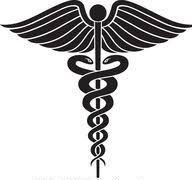Abortion Details
Termination of pregnancy, commonly known as an abortion, is legal up to 24 weeks. Pregnancy is dated by counting up from the first day of a patient's last menstrual period or LMP. Pregnancy actually occurs when a patient ovulate, this is known as the day of conception. The ovulation day of each woman is dependent on the regularity of her menstrual cycles, and because of this, it is difficult to precisely determine the actual date of a conception.
Furthermore, in medical terms pregnancy is always measured by weeks and not months. For example when a patient is told she is 7 weeks pregnant that means she conceived 5 weeks ago and the first day of her last menstrual period was 7 weeks ago. Each pregnancy has 3 trimesters; the first is 13.5 weeks, the second is 27 to 28 weeks, and full term is 40 weeks. Abortion is legal in the first trimester and part of the second trimester up to 24 weeks.
First Trimester Abortion
First trimester abortions are performed either surgically up to 13 weeks or non-surgical/medical abortion, that is the use of the abortion pill, done up to 7 weeks (RU486/Mifeprex). There are no accurate blood tests or even pelvic exams that precisely pinpoint the date of a pregnancy. The preferred method used by some physicians is an ultrasound, performed either abdominal or vaginally. The pregnancy sac is visible with an ultrasound as early as 5.5 weeks. An ultrasound denotes the date of a pregnancy, within a range of 1 to 2 days, as well as indicates whether or not the pregnancy is in the uterus. Unfortunately, sometimes pregnancy occurs in the fallopian tubes or in the pelvic cavity outside of the uterus (ectopic pregnancy). These are dangerous and sometimes life threatening medical problems. For these reasons, we always encourage an ultrasound to ensure the safety of our patients. Our doctor consults with the patient before the ultrasound is done. The consultation includes an extensive explanation of the risks and benefits of an abortion. Any questions or concerns initiated by the patient are addressed thoroughly, whether it is related to the termination of the pregnancy or alternatives.
In our office, we schedule patients in a manner that provides maximum privacy. We schedule on the hour only, so that there are never two patients waiting for the same procedure. We understand that no matter what the purpose of your visit, you deserve privacy. We take extra precautions to make sure that our patients are comfortable.
Two Day Procedure
The two day procedure is to insert a device called LAMINARIA in the cervical canal on patient's first visit, routinely performed in second trimester abortions. Laminaria is made of a sterilized sea weed, although there are synthetic ones today, it makes the cervical canal open slowly over night. The next day patient comes in with an open cervical canal for an abortion. Although we do not offer the second trimester abortions in our setting, we do use Laminaria for first time pregnancies between 10 to 13.5 weeks. The cervical canal of a patient with first pregnancy is as narrow as a pinhole. To open such a small canal to the desired width at 10 to 13.5 weeks of pregnancy, sometimes causes serious trauma to cervical fibrous tissue that may compromise patient's future pregnancies resulting in premature deliveries. Laminaria uses cervical moisture and expands 3 to 4 fold without any trauma to fibrous tissue of cervix.
Abortion Pill
The abortion pill is only for patients who are at most 7 weeks pregnant. This must be confirmed by an ultrasound. It is a safe alternative procedure to a surgical suction. It is common knowledge that every medical and surgical procedure has some risk. If we can lessen the risk, we can make the procedure safer. The failure rate of the abortion pill, when used properly, is minimal. Some publications claim an 8% failure rate, but in our years of experience, and numerous patients who have used the abortion pill, we have only had a handful of cases that resulted in a D&C.
The patient takes the pill, mifeprex(RU 486), in our office and upon discharge the patient is instructed to use some other pills (Misoprostol), dispensed in our office, in 48 hours. The miscarriage process starts shortly after the use of these pills. There is some cramping and discomfort comparative to heavy menstruation, or more. Patients are prescribed appropriate pain medication. The miscarriage process takes only a few hours. Patients are instructed to come back to our office for a free follow up, including the doctor's visit and ultrasound to assure the completion of the process. All the details of both procedures will be thoroughly explained by our surgeon so that the patient can make a well informed decision
Surgical and Non-Surgical Abortions
The advantages of nonsurgical abortions are obvious, patients don't take the minor risks involved in anesthesia, and other risks associated with a minor surgery. The disadvantages of nonsurgical abortions is that patients deal with bleeding and pain at home without the presence of a doctor. With a surgical abortion, the patient is asleep, the surgery takes only a few minutes and there is minimal bleeding. Of course, there is some discomfort, cramps and bleeding after the patient is discharged, but patient goes home knowing that the process is over. We require that our patients comfortably rest with us, after the surgery, as long as they wish. Normally this takes about less than half an hour.
